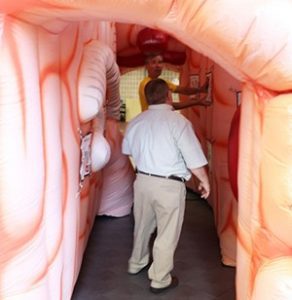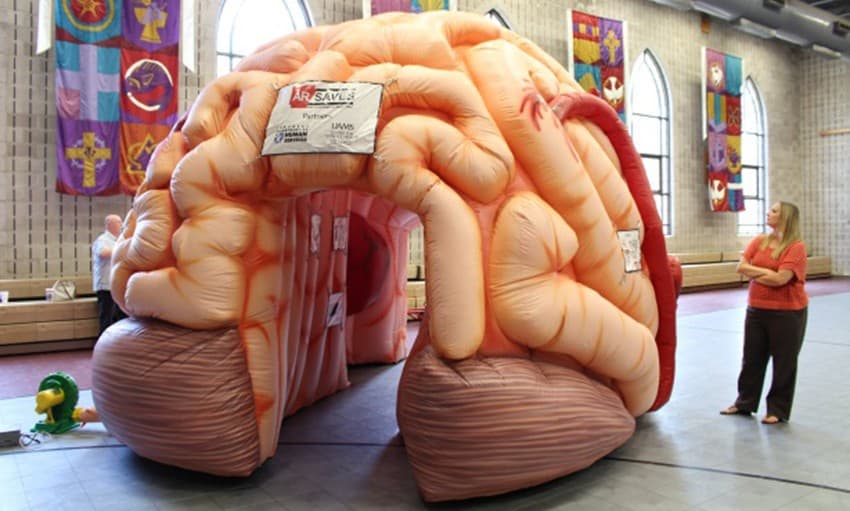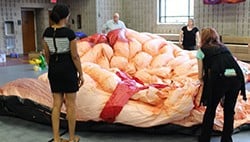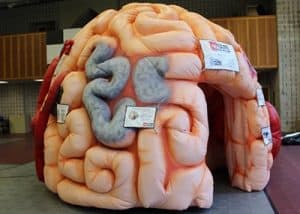Mega Brain Draws Crowds for Stroke Education
| Aug. 17, 2015 | The best way to reach people’s minds might just be with a brain — a 18-by-14-by-12-foot, inflatable Mega Brain.
The walkthrough exhibit recently acquired by AR SAVES, the statewide telemedicine stroke program, is already proving to be an effective tool for teaching about stroke and stroke symptoms.
The UAMS-led AR SAVES (Arkansas Stroke Assistance through Virtual Emergency Support) program uses a high-speed video communications system to help provide immediate, life-saving treatments to stroke patients 24 hours a day. The real-time video communication enables a stroke neurologist to evaluate whether emergency room physicians should use a powerful blood-clot dissolving agent within the critical three-hour period following the first signs of stroke.
Part of making sure people get immediate treatment is educating the public to recognize the symptoms of stroke. To better engage the public and teach them how to do that, AR SAVES this summer purchased an anatomically correct inflatable model of the human brain branded as the Mega Brain. Its size, colors and other features immediately capture everyone’s attention.

AR SAVES staff inspect the inside of the Mega Brain and attach text panels explaining different features of the brain and facts about stroke and neurological syndromes.
The Mega Brain was inflated and displayed for the first time at a public event in July in Mountain Home.
“It’s a great education tool to create excitement and get people to really understand how important the brain is, how to protect it and how to reduce risks to it and what to do if there was an emergency,” said Rick Washam, AR SAVES program health educator manager. “They see a brain that size and say, ‘Wow, look at that!’ They immediately ask questions.”
More than 47 hospital and health care facilities are part of the AR SAVES telemedicine network in towns and cities statewide. At several hundred community events around those sites each year, the program reaches more than 400,000 people.
The program’s leaders are confident that the Mega Brain will enable the volunteers and health educators staffing those events to more effectively connect to that audience while expanding its reach and appeal.
Volunteers at Mountain Home showed crowds of people around the Mega Brain while pointing out its features and the signs of different neurological syndromes as well as stroke signs.
It’s important the public be aware of the signs and symptoms of a stroke, such as facial drooping or an uneven smile, arm numbness or weakness, and slurred speech or difficulty speaking or understanding speech. To remember them and the importance of getting to a hospital immediately, think FAST — Face, Arm, Speech and Time.
Word of mouth has spread the news about the Mega Brain and interest already is high. The Mega Brain is scheduled for 15 different public events between now and the end of the year.
“From kids to grandparents, the response was outstanding at Mountain Home,” Washam said. “Everybody enjoyed it and engaged by it. It was a unique opportunity for people to be educated about the brain from trauma to stroke.”


